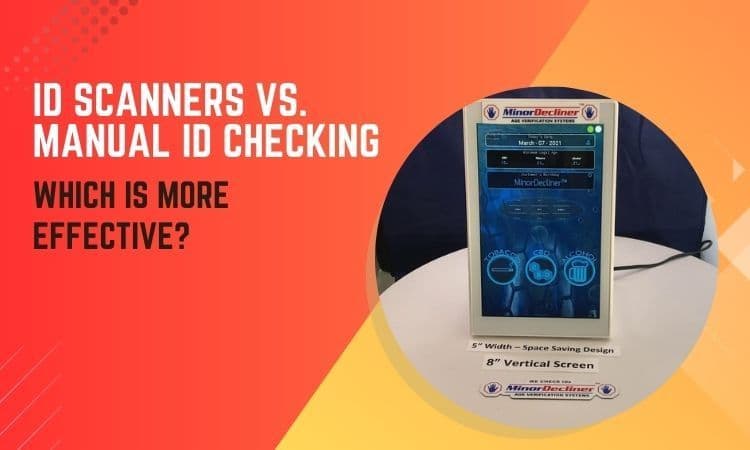
Id Scanners vs. Manual Id Checking: Which Is More Effective?
Age verification is a critical aspect of age-restricted sales, such as tobacco and alcohol. Failing to verify the age of customers can result in legal penalties and harm the reputation of a business. The two primary methods for age verification are manual ID checking and ID scanners.
In this blog post, we will explore the advantages and disadvantages of each method and determine which one is more effective.
Manual ID Checking: Manual ID checking is the traditional method of verifying a customer's age. It involves visually examining an ID, such as a driver's license, passport, or ID card, to ensure that it is valid and belongs to the person presenting it. While manual ID checking is straightforward and requires no additional equipment, it has several potential drawbacks. First, it can be time-consuming, especially during busy periods when there are many customers to serve. Second, it is susceptible to human error, such as misreading the ID or failing to detect a fake ID. Finally, manual ID checking can be inconsistent, with different staff members interpreting IDs differently.
ID Scanners: ID scanners are electronic devices that scan and verify IDs automatically. They use technologies such as barcode scanning and magnetic stripe reading to quickly and accurately verify the age of a customer. ID scanners have several potential advantages over manual ID checking. First, they are much faster, which can help reduce wait times and increase efficiency. Second, they are more accurate, with a lower risk of human error or misinterpretation. Finally, ID scanners can provide additional features such as record-keeping, fraud detection, and customer data analytics.
Comparison: The effectiveness of manual ID checking and ID scanners depends on several factors. For example, the type of business, the volume of transactions, and the need for accuracy all play a role in determining which method is best. In general, ID scanners are more effective for businesses with high volumes of transactions or where accuracy is critical. On the other hand, manual ID checking may be more appropriate for businesses with lower transaction volumes or where personal interaction is important.
Several case studies have shown that businesses that have switched from manual ID checking to ID scanners have seen significant benefits, such as increased speed and accuracy, reduced wait times, and improved compliance with age-restricted sales laws. However, there are also examples of businesses that have reverted to manual ID checking due to issues with the cost or compatibility of ID scanners.
Best Practices: To ensure the effectiveness of both manual ID checking and ID scanners, businesses should follow best practices. For manual ID checking, staff should be trained on how to check IDs properly and consistently. For ID scanners, businesses should ensure that the scanner is compatible with their existing systems, regularly update the software and firmware, and train staff on how to use it. In either case, businesses should keep a record of all ID checks and transactions for compliance and auditing purposes.
Conclusion: Both manual ID checking and ID scanners have their advantages and disadvantages. The choice between the two depends on several factors, such as the type of business, the volume of transactions, and the need for accuracy. Ultimately, businesses should choose the method that best suits their needs and follow best practices to ensure effective age verification and compliance with age-restricted sales laws.
Appreciate the creator